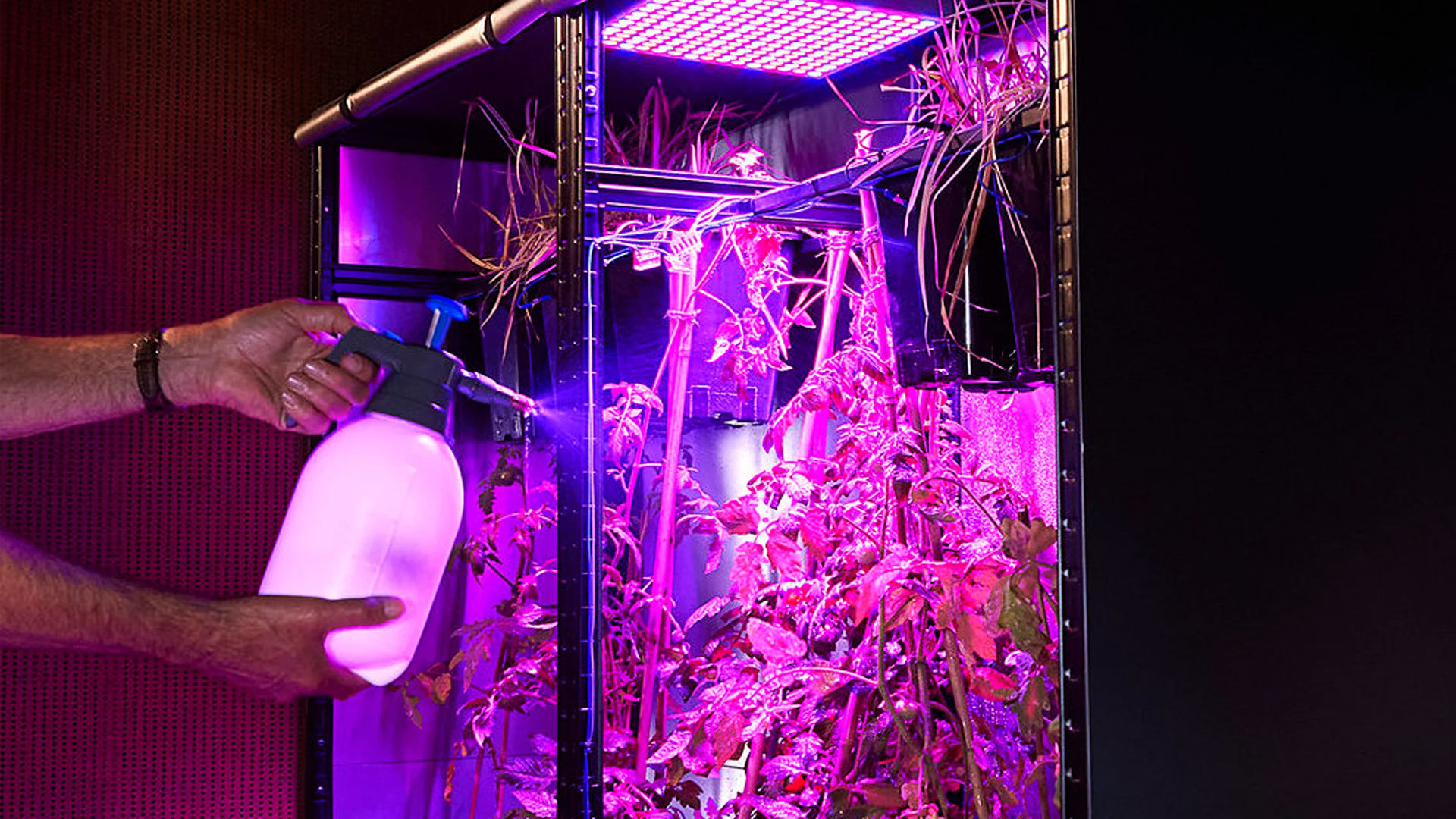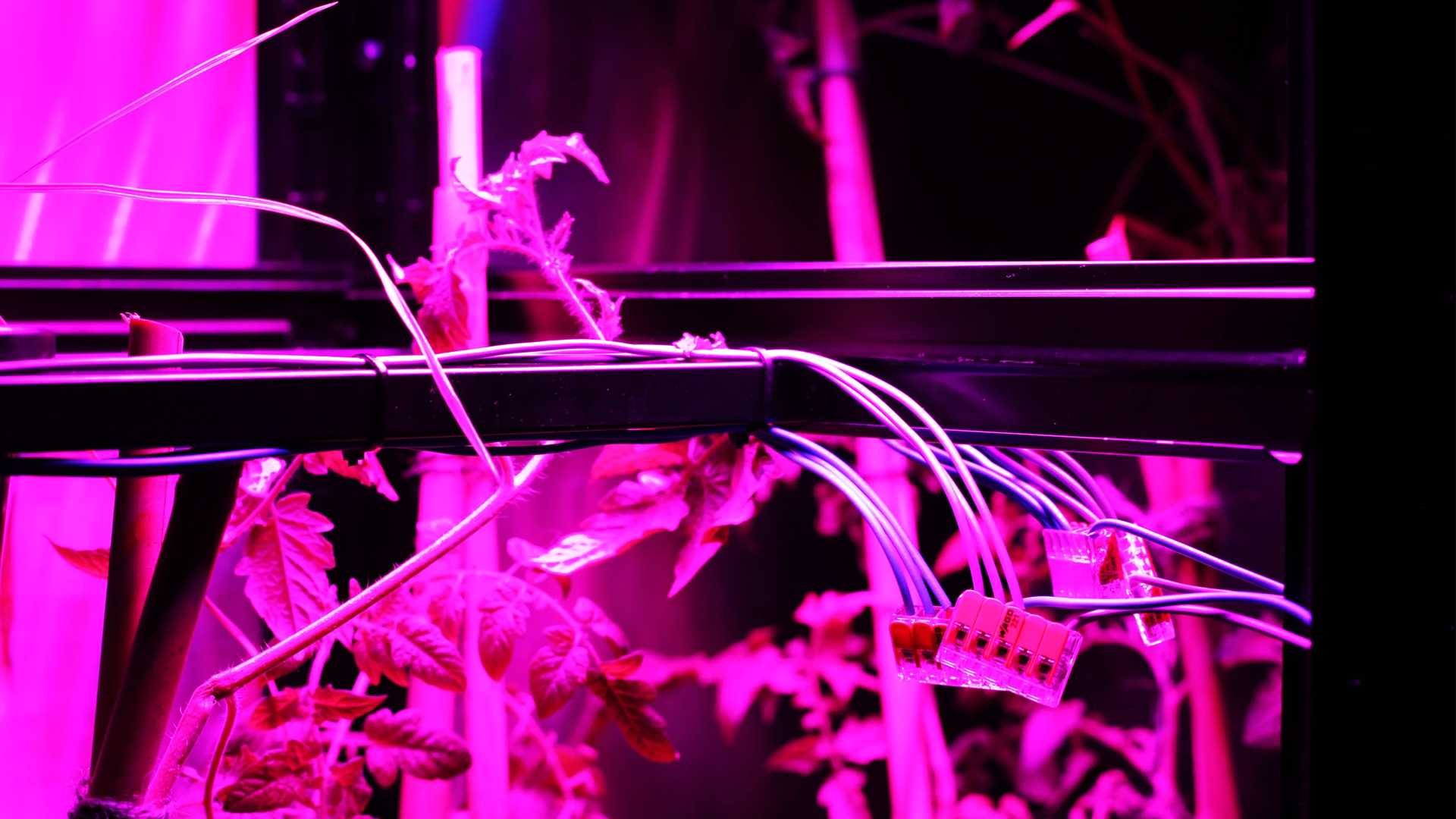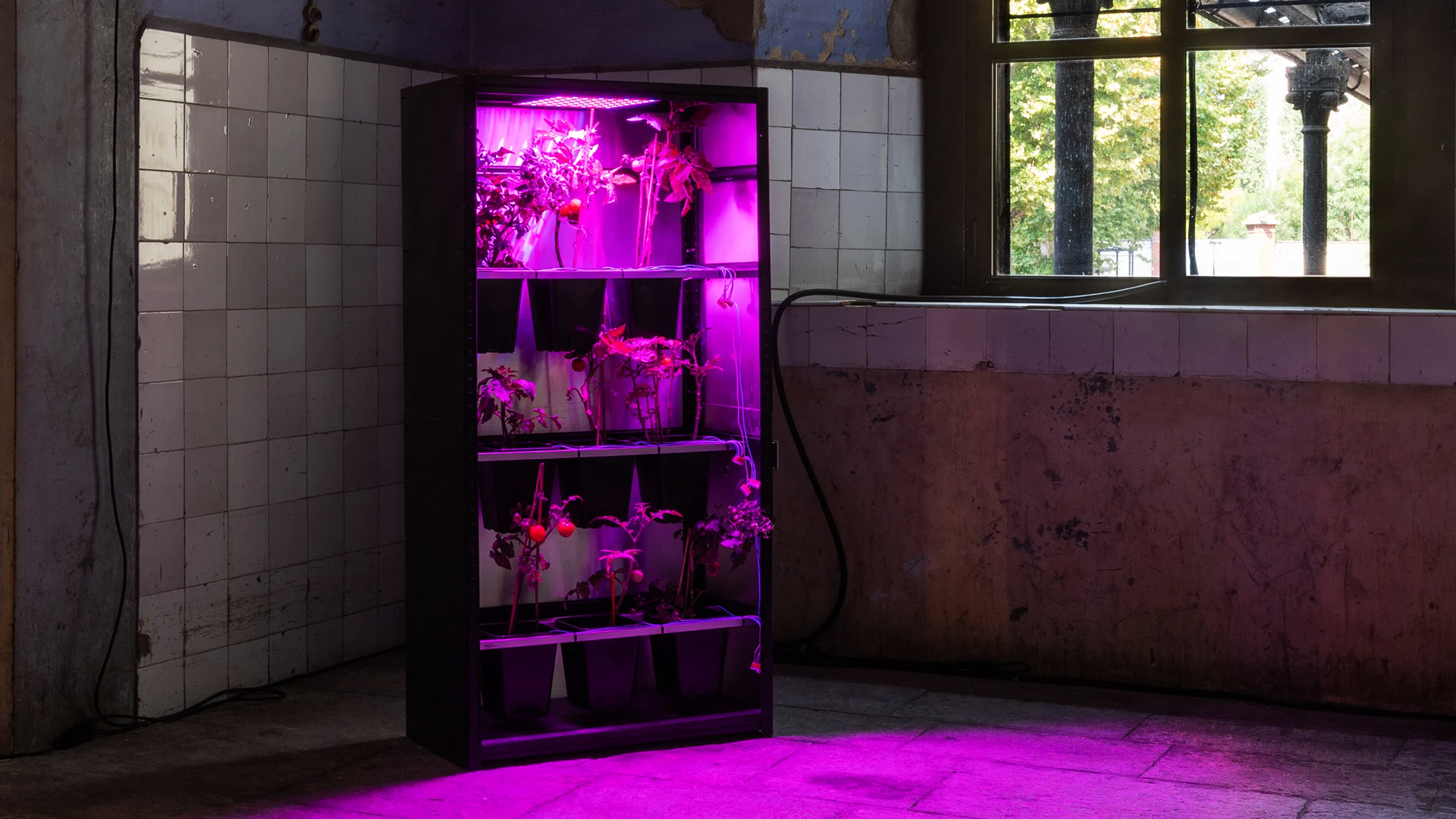Exploring the idea of technology entering a symbiotic relationship with nature, design graduate Ilja Schamle has built a cloud server powered by tomato vines.
If it had the potential to knock digits off your electricity bill, would you take up gardening?
An Eindhoven design graduate named Ilja Schamle has long wanted to explore the possibility of technology entering a symbiotic relationship with nature, and her latest creation is raising eyebrows at Milan Design Week.
Dubbed Warm Earth, her exhibit is conceptually based on an apocalyptic future in which humanity must utilise plants as its sole energy source.
Looking like a cross between a modern gaming PC and a plant stand, Schmale’s design uses renewable energy derived from tomato vines to somehow run a fully functioning cloud server. Talk about superfood, eh?
Contained within a traditional server cabinet, nine tomato plants grow in what is effectively a neon purple greenhouse. Aside from being watered by hand, the whole thing is self-sufficient.

As for the server itself, it’s mounted to the exterior and intrinsically linked to the fruits via a ventilation shaft.
So, where exactly is the power coming from?
Hot air is funnelled inside the installation which keeps the plants healthy and busy. Meanwhile, plant-microbial fuel cells (pioneered by Wageningen University researchers) turn each of them into a sort of natural battery.
The process of photosynthesis – in this case prompted using a solar powered grow lamp – allows the plants to draw energy from the light, converting it into chemical energy which is stored within growth protein reserves.
As electrons are excreted by microbes in the roots, they are caught by a conductor at the base of each plant pot which Schmale describes as an ‘iron and activated carbon grid.’ We’ll take your word for it chief.





















